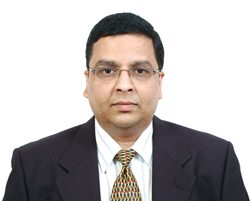With over three decades of experience in the industry working in private sector, semiconductors, policy-making and many other roles, PVG Menon, president and chief executive officer, VANN Consulting, speaks with Ankita KS on the trends, skillsets, opportunities for academia, new initiatives by the government and industry for engineers in the electronics industry.

Q. What are the latest trends in the electronics-semiconductor industry?
A. The electronics industry should be looked at from two perspectives: products and design services.
For electronic products the trend is mixed. There is a large number of imports happening. Even for products manufactured or assembled in India, the level of domestic value addition is worryingly low. Reasons are linked to structural disabilities of manufacturing high-volume electronics in the country.
Execution of policies for supporting domestic manufacturing has been extremely sub-optimal, and there are yawning gaps between intent and implementation of these policies.
The key is for India to grow its own domestic products industry. The government needs to step in and have a clear vision of what needs to be done.
Design services are doing well. There has been mushrooming of VLSI and embedded software services companies in the last few years. There have also been many mergers and acquisitions happening in this area, which has encouraged several mid-level experts to start their own services companies.
Q. Is quality talent a challenge for the electronics industry in India?
A. Yes! In the past, VLSI design and embedded systems jobs were considered glamorous. Then came opportunities in such areas as e-commerce, deep learning and artificial intelligence (AI). So young talent started to go there. In the meantime, systems got complex and performance demand on the ICs powering them grew, leading to demand for more complex chips. Software complexity also went up and systems design became a challenge.
Second, youngsters need a strong grasp of fundamentals. While tools keep changing, emphasis on developing basics cannot be over-emphasised.
Third, professionals must be in the mode of lifelong learning.
On embedded software side, it used to be that if one were an expert at a certain OS, then he or she had arrived. Today, as systems become more and more complex, there is often a need to support multiple OSs. Developing reusable code that can work on multiple platforms is important.
Q. Which key technology skill-sets are in demand in the industry today?
A. Core skills for VLSI design remains knowing how to use VHDL/Verilog, physical design, Perl, TCL, etc.
EDA tools are increasing in complexity and now many colleges have these installed in labs.
There are government programmes like Chips-2-Systems programme by Ministry of Electronics & IT that enable students to do real-world chip design and even tape-out their design.
On software side, knowledge of embedded C++, embedded operating systems, simulation tools like Matlab or Simulink, knowledge of networking and communications protocols, etc is must.
Q. What should aspirants do to aim for a job in the semiconductor sector?
A. They should focus on learning as much as possible and leverage all available resources, such as the Internet, online courses and libraries.
They must remember that only they are responsible for their career progression. They should develop the ability to extract conceptual learning from each project.
They should chase work-content, and not titles. Often, youngsters change jobs for bigger titles. Soon, they have a fancy designation but no ability to deliver. Tech companies value three to four years of deep domain experience. Even worse is rapid job-hopping, as it indicates instability.
Fourth, they must look at the big picture of what they are doing. This helps understand how their project fits into the bigger system and helps them grow professionally.
Q. What should academia do to create techies suitable for the industry?
A. Academia needs to focus on laying strong foundations for students. The pedagogical focus should be on teach-test-repeat-refresh.
Allied to this is the need for strengthening the internship system and making it mandatory for industry exposure during the internship. This helps students to relate what they have learned to real-world situations. Colleges must build strong links with industry so that students can get internship opportunities. They must also do away with one-month internships.
Academia needs to involve industry faculty to come in, and share their experience and wisdom with students.
Faculty needs to reinvent themselves to be mentors and facilitators, rather than unidirectional teachers.
Q. Are there initiatives where trade bodies are collaborating with academia and industry to bridge the gap between them?
A. Association between trade bodies like IESA and academia is ongoing. For making these interactions successful, one must define desired end objectives and the passion of the champions driving such initiatives.
Tie-ups that have been successful are those where a long-term view has been taken and the effort is driven in a focussed manner.




